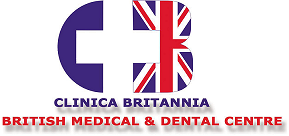Brushing your teeth is important, but dental sealants may be the best way to prevent kids from getting cavities.
Dental sealants prevent 80 percent of cavities for two years after application.
They also continue to protect against 50 percent of cavities for up to four years.
The sealants can be retained in the mouth for up to nine years, according to the CDC.
About 43 percent of 6- to 11-year-old children have a dental sealant. Children from low income households were 20 percent less likely to have sealants than children from higher income households.
School-age children without sealants have almost three times more cavities than children with sealants.
Applying sealants in school-based programs to the nearly 7 million children from low income households who don’t have them could save up to $300 million in dental treatment costs, the CDC reported.
The sealants need to be monitored and maintained during regular care visits to ensure they do not wear away.
In addition to preventing cavities, sealants can ensure the teeth stay intact.
Once a tooth is drilled and filled, restored, or extracted, the natural structure is compromised. There is a lifetime cost associated with maintaining the restored tooth or implant.
I’ve never observed an adverse reaction to dental sealants, and none have been reported in the literature. People tolerate dental sealants well.
Most children don’t benefit from prevention because of overregulation and restrictions at all levels on preventive dental care.
Some are insurance barriers, such as only covering certain teeth for sealants. There are also rules imposed by state boards that only allow hygienists working with dentists to place sealants, or requiring a dental examination with a dentist before prevention is allowed.
If the application technique is perfect, dental sealants can last a lifetime. More often than not, though, they do need to be replaced.
As soon as your child is getting new teeth in with grooves called ‘pits and fissures like molars and premolars, get them sealed once they are erupted. This happens at 6, 12, and 18 years of age.
Baby or primary teeth can be sealed, but the child should be old enough to tolerate the painless procedure, which involves being able to hold their mouth open and not move for a few minutes. Usually, treating younger teeth is performed only on those with an increased risk of tooth decay.
You can seal any vulnerable surfaces, but retention is best in the pits and fissures.
Adults can also benefit from sealants.
With age, our exposure to decay increases, and the protective quality and biochemistry of saliva changes with certain medications over time. Adults are also candidates for this treatment.
But if you already have a restoration or implant, then that tooth will not benefit from a sealant.
Sealants have proven to be safe and effective,. The benefits outweigh the risks.

